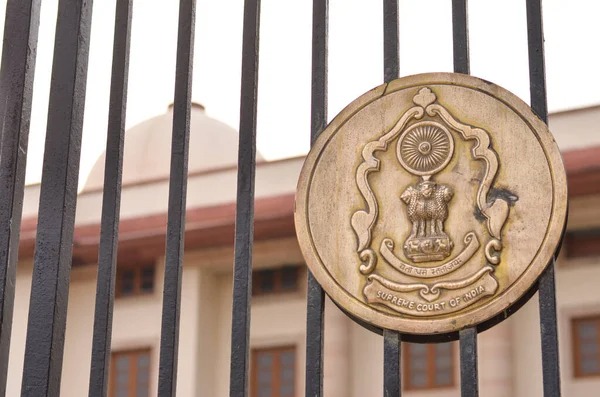@JUDGMENTTAG-ORDER
K.G. Shankar
1. The revision petitioner is the de facto complainant. He is the husband of the deceased Thanugula Mangamma, who died on 01.04.1999 owing to burn injuries. The case of the prosecution is that on 27.03.1999, at about 4.30 p.m., the accused raped the deceased. On 30.03.1999, at about 11.30 p.m., the deceased immolated herself with a view to commit suicide as she could not withstand the insult. At about 7.30 a.m. on 31.03.1999, the de facto complainant produced the deceased before the Kathalapur Police Station.
2. The charges under Sections 376 and 306 of the India Penal Code (IPC, for short) were framed against the accused. The prosecution examined as many as 12 witnesses and marked Exs.P.1 to P.18. On an overall consideration, the learned trial Judge considered that no case u/s. 306 IPC was made out. He, however, held that the prosecution established the guilt of the accused beyond reasonable doubt for the offence u/s. 376 IPC and sentenced the accused to simple imprisonment for a period of seven years and fine of Rs. 1,000/-with appropriate default sentence.
3. The accused preferred appeal before the Sessions Court, Karimnagar. The learned I Additional Sessions Judge, Karimnagar reversed the conviction recorded by the trial Court and acquitted the accused for the offence u/s. 376 IPC. Aggrieved by the judgment of the appellate Court, the husband of the deceased (PW.1) preferred the present revision.
4. The point for consideration is whether the prosecution brought home the guilt of the accused beyond reasonable doubt.
5. Very few facts are in controversy in this case. It is the case of the prosecution that the accused raped the deceased. The deceased thereafter attempted to commit suicide by immolated herself. When she was taken to the hospital, PW.10, who is the Mandal Revenue Officer, recorded the statement of the deceased under Ex.P.12. PW.11, who was the Sub-Inspector of Police, Kathalapur Police Station, recorded the statement of the deceased allegedly at 7.30 a.m. on 31.03.1999. It is Ex.P.13. PW.12 was the Inspector of Police who conducted the investigation in this case. He recorded the statement of the deceased under Ex.P.18. Inter alia, it is the contention of Sri P. Narender, learned counsel for the revision petitioner that there was only seeming inconsistency between the statements under Ex.P.12 on the one side and Exs.P.13 and P.18 on the other side and that even this seeming inconsistency has been explained. It is his contention that the appellate Court erred in appreciating Exs.P.12, P.13 and P.18 and recording acquittal.
6. On the other hand, Sri G. Vijaya Saradhi, learned counsel for the accused/second respondent herein contended that the statements under Exs.P.12, 13 and 18 could not be treated as dying declarations, as they were not relating to the cause or circumstances relating to the death of the deceased. He also contended about the inconsistencies in the dying declarations, one of which being in favour of the accused should lead to an acquittal of the accused.
7. I may advert to the facts relevant for the purpose of present case.
a) PW.1, de facto complainant is the husband of the deceased Mangamma. On 27.03.1999, the accused went to the house of the deceased, threatened her and had carnal acquaintance with her against her wish in the cattle shed of the accused. On 30.03.1999, at about 11.30 p.m. the deceased poured kerosene over herself and set fire to herself as she could not withstand the situation. PWs.4 and 5 witnessed the incident of self-immolation of the deceased.
b) PW.1 took the burnt body of the deceased to Kathalapur Police Station at about 7 a.m. on 31.03.1999. PW.11, who was the Sub-Inspector of Police at that time, recorded Ex.P.13 statement of the deceased. The deceased was sent to the hospital. PW.11 requisitioned the Mandal Revenue Officer, Korutla (PW.11) to record the dying declaration of the deceased. PW.10 recorded the dying declaration of the deceased under Ex.P.12. The deceased subsequently breathed her last on 01.04.1999. Procedures like the interest and the autopsy were conducted thereafter.
8. In this backdrop, two circumstances became relevant. First of them is the alleged illicit intimacy between the accused and the deceased. The second one is inconsistency in the statements under Exs.P.12, P.13 and P.18.
9. Regarding the illicit intimacy between the accused and the deceased, Ex.P.12 reads as if the deceased made a statement to PW.10 that the deceased had illicit intimacy with the accused since about a year prior to the death and that the illicit intimacy developed on account of threat from the accused that he would kill her unless she accepts for the illicit intimacy with the accused. Ex.P.12 reads that it was recorded at about 8 a.m.
10. The last sentence of Ex.P.12 is a patent interpolation in different ink compared with the other part of Ex.P.12. In the last sentence of Ex.P.12, it was recorded that the accused raped the deceased on the evening of Saturday, which perhaps was 27.03.1999.
11. The learned counsel for the accused pointed out that it is fantastic for the deceased to state that she did not accept to sleep with the deceased on one occasion but continued the illicit intimacy for a period of one year on account of fear and that such a statement was unnatural and could not be swallowed. I agree with the contention of the learned counsel for the accused that a lady would not have continued to live in adultery with another person out of fear. When the deceased herself made a statement to PW.10 that she had illicit intimacy with the accused, I accept the stand of the deceased that she had illicit intimacy with the accused.
12. Once the accused admittedly had illicit intimacy with the deceased, the question of the accused raping the deceased would not arise. The last sentence in Ex.P.12, consequently, becomes redundant. At any rate, where the deceased admitted that she had illicit intimacy with the accused, the carnal acquaintance between the accused and the deceased would not be rape within the meaning of Section 376 IPC. The accused, therefore, cannot be convicted for the offence u/s. 376 IPC on the strength of Ex.P.12.
13. As already pointed out, PWs.10, 11 and 12 recorded Exs.P.12, 13 and 18. The learned counsel for the revision petitioner inter alia contended that Exs.P.13 and P.18 proved the case of the prosecution and that Ex.P.12, which is not in consonance with the prosecution story, deserves to be rejected. Admittedly, Exs.P.13 and P.18 are more or less identical. However, a dying declaration is expected to bear the signature of the deponent or an endorsement that the deponent was not in a position to sign or affix her thumb impression. While so, Ex.P.18 did not contain such an endorsement nor did it contain the signature of the deceased. Ex.P.18, which was recorded by the Investigating Officer (PW.12), therefore, shall be considered to be a statement u/s. 161 Cr.P.C., but not a dying declaration within the meaning of Section 32 of the Indian Evidence Act.
14. Ex.P.13, however, was signed by the deponent. At that same time, Ex.P.13 did not show that the deceased was conscious that she was making a dying declaration, as there was no endorsement on Ex.P.13 that there was no recital in Ex.P.13 that it was a dying declaration recorded by PW.5. That apart, the deceased was suffering from serious burns even by 7 a.m. on 31.03.1999 when she was brought to the police station. When PW.12 recorded the statement of PW.12, it is not clear whether the deceased was conscious and was in a fit state to make a statement. There was no endorsement from any competent physician on Ex.P.13 certifying that the deceased was in a fit state to make a statement. On this ground alone, Ex.P.13 deserves to be discarded as a dying declaration. I may, however, accept Ex.P.13 as a dying declaration for the sake of argument and consider its ramifications.
15. Ex.P.12 is indeed a dying declaration recorded by PW.10. However, Ex.P.12 also did not contain an endorsement that the deceased was aware that she was making a dying declaration. However, Ex.P.12 contained the endorsement from the Doctor that the deceased was conscious and was in a fit physical and mental condition to make a statement.
16. In Ex.P.12, the deceased stated that she had illicit intimacy with the accused. If Exs.P.12 and P.13 are compared with each other, they do not agree. Ex.P.13 reads as if the accused raped the deceased so much so the deceased was committing suicide. Ex.P.12 reads that there was illicit intimacy between the accused and the deceased and that the deceased was committing suicide because she was afraid that her husband PW.1 might come to know about the illicit intimacy between her and the deceased. Thus, Ex.P.12 is a statement which exonerates the deceased from liability. Ex.P.13, however, shows that the accused was guilty of committing rape. Which of these two statements is to be given importance is the question.
17. The learned counsel for the accused placed reliance upon Dandu Lakshmi Reddy v. State of Andhra Pradesh 1999 (2) ALD (Crl.) 648 (SC). The question of plurality of dying declaration came up for consideration before the Supreme Court in this case. It was a case of bride burning. In the statement recorded by a Magistrate and the statement recorded by the Sub-Inspector of Police, contradictory versions came out. One of the declarations was in favour of the accused and the other declaration was against the accused. Added to it, neighbours and parents of the deceased declared that the deceased clearly informed them that her clothes got fire accidentally while she was boiling milk. The Supreme Court held that in view of such contradictory dying declarations and contradictory evidence, the accused should be given benefit of doubt.
18. In the present case, there does not appear to be such oral evidence in favour of the accused. Be that as it may, when there are two or more dying declarations and when at least one of the dying declarations is in favour of the accused, the accused should be given the benefit of doubt unless the prosecution successfully explains the contents of such a dying declaration which is in favour of the accused. In this case, there is no reasonable and proper explanation from the prosecution why Ex.P.12 should be discarded.
19. Added to it, Exs.P.13 and P.18 cannot be treated as dying declarations. Further when they did not contain endorsement from a competent medical officer that the deceased was in a fit state to make the statement, Exs.P.13 and P.18 become inadmissible. Viewed from any angle, the benefit of doubt accrues to the accused in view of the clear admission of the deceased that she had illicit intimacy with the accused. It may be recalled that this is not a case where the acquittal u/s. 306 IPC is questioned; this is a case where the acquittal u/s. 376 IPC alone is for the scrutiny.
20. In the light of the admission of the deceased, there cannot be rape of the deceased by the accused. Consequently, the accused is liable to be acquitted for the offence u/s. 376 IPC.
21. The appellate Court was perfectly justified in considering that no case was made out against the accused for the offence u/s. 376 IPC and acquitting the accused for the offence u/s. 376 IPC. There is no error in the judgment of the appellate Court.
22. The Criminal Revision Case is devoid of merits and is, accordingly, dismissed.

